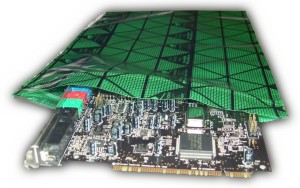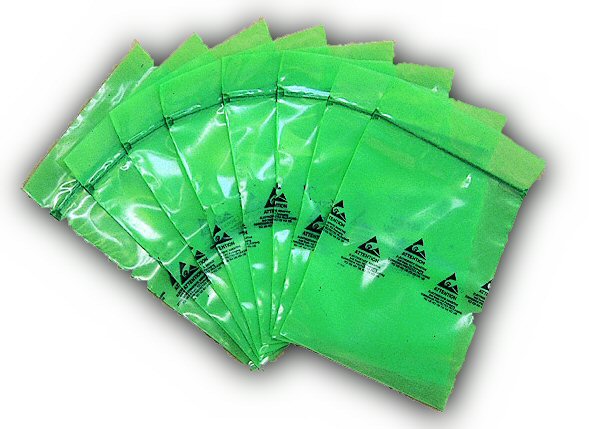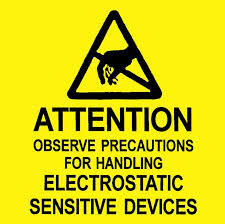

PRODUCT DESCRIPTION
VCI Antistatic bags meet type 2 requirements under MIL-B-81705. The unique feature of VCI anti static bags is their ability to provide corrosion and oxidation protection to electronic components.The Antistatic and anticorrosion inhibiting properties are humidity independent. The unique composition does not require the presence of moisture to function. VCI Antistatic bags effectively protect contents from
Triboelectric charge generation and from corrosion, pitting, oxidation, staining, and galvanic corrosion.
METALS PROTECTED
Steel, iron, copper, brass, solder, aluminum and various plated substrates, silver, nickel, cadmium, zinc.
PERFORMANCE
Surface Resistivity ------------ < 1012 ASTM D 257
Static decay rate -------------- 0.7 sec 5000-0 volts EIA 541
Triboelctric charge ------------ 0.12 NC/SQ INCH EIA 54
Static electricity is a familiar phenomenon, yet not well understood, that affects all branches of industry and on a variety of environments. It is something like a ghost – impossible to see it, touch it or smell it. But, the effects of an accumulated amount of static electricity can definitely be detected. These effects include an electric shock that can be dangerous and can cause a reduction in productivity, defects in machinery, fire and explosions. Electrical charges can also cause severe damage to sensitive electronic components leading to expensive reprocessing and/or on-site repairs.
Electrical charging is a result of the contact (the exchange of electrons) between two materials that come into contact with each other and are then separated. An excess amount of negative ions accumulate on one of the materials and an excess of positive ions on the other. The static charge is caused by one of two processes: either the contact between two surfaces (contact induced charge) or by being near an electrostatic field (electrostatic induction).
Whenever two materials are charged by contact, electrons are passed from the surface of one of the materials to the surface of the other material. When the two surfaces are separated from each other, one surface loses electrons and becomes positively charged while the other gains electrons and becomes negatively charged.



